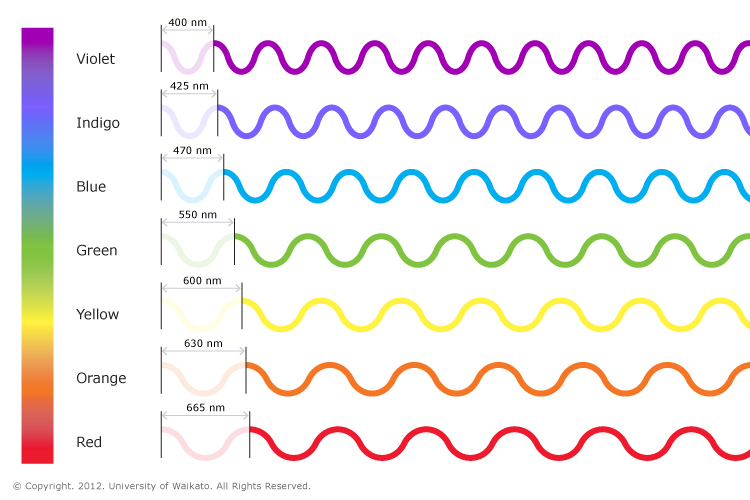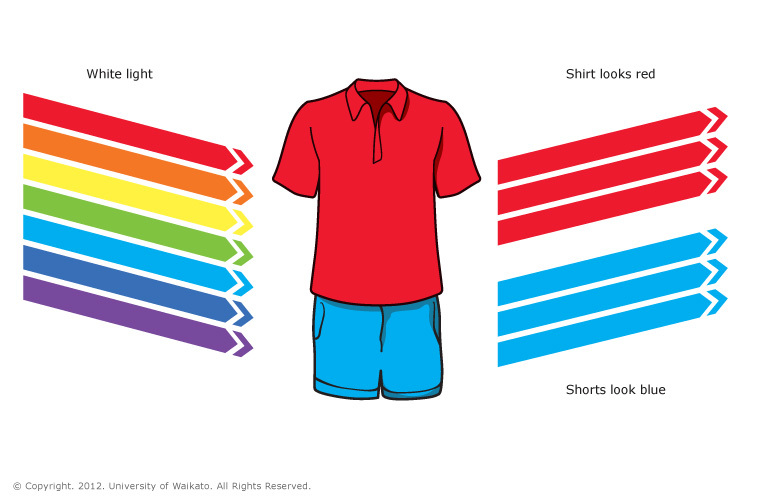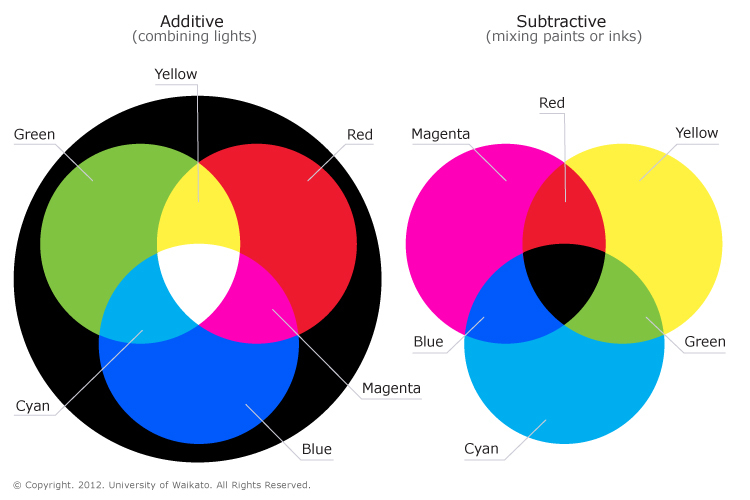Light is made up of wavelengths of light, and each wavelength is a particular colour. The colour we see is a result of which wavelengths are reflected back to our eyes.
Visible light
Visible light is the small part within the electromagnetic spectrum that human eyes are sensitive to and can detect.
Visible light waves consist of different wavelengths. The colour of visible light depends on its wavelength. These wavelengths range from 700 nm at the red end of the spectrum to 400 nm at the violet end.
White light is actually made of all of the colours of the rainbow because it contains all wavelengths, and it is described as polychromatic light. Light from a torch or the Sun is a good example of this.
Light from a laser is monochromatic, which means it only produces one colour. (Lasers are extremely dangerous and can cause permanent eye damage. Extreme care must be taken to ensure that light from a laser never enters someone’s eyes.)
Colour of objects
Objects appear different colours because they absorb some colours (wavelengths) and reflected or transmit other colours. The colours we see are the wavelengths that are reflected or transmitted.
For example, a red shirt looks red because the dye molecules in the fabric have absorbed the wavelengths of light from the violet/blue end of the spectrum. Red light is the only light that is reflected from the shirt. If only blue light is shone onto a red shirt, the shirt would appear black, because the blue would be absorbed and there would be no red light to be reflected.
White objects appear white because they reflect all colours. Black objects absorb all colours so no light is reflected.
Colour detection
The retina of our eyes contains two types of photoreceptors – rods and cones. The cones detect colour. The rods only let us see things in black, white and grey. Our cones only work when the light is bright enough, but not when light is very dim. This is why things look grey and we cannot see colours at night when the light is dim.
There are three types of cones in the human eye that are sensitive to short (S), medium (M) and long (L) wavelengths of light in the visible spectrum. (These cones have traditionally been known as blue-sensitive, green-sensitive and red-sensitive, but as each cone is actually responsive to a range of wavelengths, the S, M and L labels are more accepted now.)
These three types of colour receptor allow the brain to perceive signals from the retina as different colours. Some estimate that humans are able to distinguish about 10 million colours.
Mixing colours
The primary colours of light are red, green and blue. Mixing these colours in different proportions can make all the colours of the light we see. This is how TV and computer screens work. If you look at a screen with a magnifying glass you will be able to see that only these three colours are being used. For example, red and green lights are used to make our brain perceive the image as yellow.
When coloured lights are mixed together, it is called additive mixing. Red, green and blue are the primary colours for additive mixing. If all of these colours of light are shone onto a screen at the same time, you will see white.
This is different when you are mixing paints. Each colour of paint is absorbing certain colours and reflecting others. Each time another colour of paint is mixed in, there are more colours absorbed and less are reflected. The primary colours for adding paints or dyes, such as for a computer printer, are yellow, magenta and cyan. If you mix all of these colours together, you will absorb all the light and will only see black, because no light will be reflected back to your eyes.
You can easily experiment with this. Hold some coloured cellophane in front of your eyes and have a look around. Notice how some colours are changed and others look similar. Figure out which colours are being absorbed.
Nature of science
It sometimes takes a long time for new scientific knowledge to become widespread. For example, many people used to think that dogs could only see in black and white. It is now known that dogs have two kinds of colour receptors that allow them to see yellows and purples. Even though the initial experiment was done in 1989, many people are still unaware that dogs can see some colours.



No comments:
Post a Comment